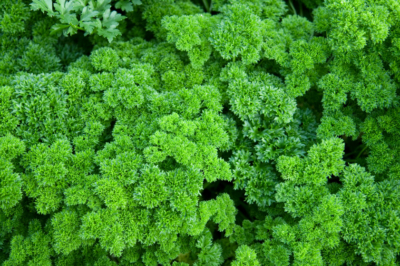Parsley takes a special role among the aromatic herbs. Unlike most other herbs, it is not a light germinator, but a dark germinator. That is why you need a lot of patience for growing parsley.

How to sow the seeds of dark sprouts parsley
- Let the seeds swell before sowing
- Sow on potting soil or in the open ground
- In the open ground, mix in marker seed or sand
- Cover seed rows with soil
- Keep soil moist
- Prick out after emergence
Water seeds before sowing
Parsley seeds are very hard. If you soak the seeds in lukewarm water for several hours beforehand, you can shorten the germination process somewhat. Spread the seed thinly in the seed pots or seed rows in the garden.
Cover the seeds with a layer of soil, which must be two to four times as thick as the seed. In the case of parsley, this is about 1 to 1.5 centimeters. Gently press the layer of soil onto the seeds.
Place the pots in a warm place or, in the open ground, make sure the soil is not too cold. Keep the soil surface moist.
Parsley germinates very slowly and irregularly.
A good three to four weeks may pass before the first green tips appear.
Since not every seed actually germinates, you should sow enough seeds. Professional gardeners plant up to ten seeds per pot, or sow additional rows in the open.
At the latest, when the plants are five centimeters high, you need to prick out the parsley to a distance of at least ten centimeters. Only one plant at a time remains in the pot. Places in the bed where the seed has not germinated, fill with excess plants.
Parsley grows slowly
Parsley is not only slow to germinate, you also need to be patient as it grows. Therefore, sow parsley with a marker seed like radishes, which germinate in both light and dark.
Tips & Tricks
Seeds of dark sprouts like parsley respond to long-wave light that penetrates thinner soil layers. Short-wave light inhibits the germination process. Therefore, the seeds of these plants must always be kept dark until they emerge

